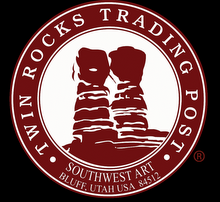Rising early allows me time to think with a clear head, uncluttered by the day's confusions. During my morning jogs, my mind flows in an unbroken stream of thoughts; sometimes productive, often not. As soon as I get back to the house, the demands begin; "Dad, can you make me a pancake? Dad, where are my socks? Dad, have you seen my shoes? Dad, did you sign my homework folder?" The questions come quickly; like machine gun fire, and that is before I even make it to work, with ringing telephones and angry public servants.
During my recent jogs, I have had time to think about the loss of a childhood friend. When we were young, Johnny and I were the best of friends. I fondly remember countless times when his father took us camping, hiking and water skiing. As we grew older, geography and the demands of everyday life kept us from seeing much of each other.
When he died of a heart attack recently, at age 45, I was stunned. At this stage of my life, I have not often had to deal with that type of loss, and the emotions are still quite new. I think I may have accepted Johnny's death from an automobile or industrial accident much easier. A heart attack just seems an unnatural way for such a young man to die.
I was scheduled to be out of town during his funeral, so I did not attend. When I arrived back after my trip, I drove to the cemetery to see Johnny's grave. Frankly, I am not sure what I was looking for, but felt compelled to make the pilgrimage. A slight mound beneath the grass, banners that said, "Beloved Son" and an abundance of flowers wilting in the afternoon sun, confirmed the solemn ceremony had indeed occurred.
Kira and Grange were intrigued with my detour, and wanted to know why I had taken them on a drive through the cemetery. They peppered me with questions about why we were there, who was my friend, how did he die, did he have any family in Blanding, did I know any other people in the graveyard and, if so, what were their names. The concept, finality and inevitability of death are still foreign to my children, even though Jana and I have spoken with them about it on countless occasions in relation to strangers, little girls who have been abducted and other bad things that can happen to kids who are not careful around people they do not know.
For days, I thought about my own mortality, and what it might mean to my family if I were suddenly gone. In the midst of these thoughts about death and dying, Grange did something to remind me that life is an ongoing adventure; a gift to be enjoyed as long as it lasts. His message, though inadvertent, came through loud and clear.
 On Wednesday, as I grabbed a notebook and headed for my weekly meeting with Craig, Susan and Mark, the restaurant management team, the signal arrived. Grange streaked by as I walked out the trading post door. He was heading east, towards the cafe. I thought he must be on yet another mission to convince the gift shop cashier to exchange a candy bar for a few of his extremely valuable marbles. His overall concept of money is not well developed, and he still believes he can convince the staff that marbles are a proper medium of exchange, even though his arguments have never succeeded in the past.
On Wednesday, as I grabbed a notebook and headed for my weekly meeting with Craig, Susan and Mark, the restaurant management team, the signal arrived. Grange streaked by as I walked out the trading post door. He was heading east, towards the cafe. I thought he must be on yet another mission to convince the gift shop cashier to exchange a candy bar for a few of his extremely valuable marbles. His overall concept of money is not well developed, and he still believes he can convince the staff that marbles are a proper medium of exchange, even though his arguments have never succeeded in the past.
What I did not realize until later was that he had something much sweeter in mind. When I arrived for my meeting, I noticed Grange was not at the candy counter. Instead, he was following Ruth, a smart, blonde, 20 year old server around the cafe. I mistakenly concluded he was trying to learn the business so he could pick up a few quarters to make yet another run at the candy display. With that thought in mind, I said to Ruth, "Train him well."
I was pleased to see my five year old catching on so quickly, and went over to rub his head and compliment him. When I did, he turned scarlet, and said, "Daaaad." It was then that I noticed what he was really trying to pick up was Ruth; he had fallen in love. The staff was quick to let me know this was not a completely new infatuation, Grange had been at the restaurant asking for Ruth every day that week. When she was not there, he left dejected, and when she was in, he followed her around, mooning over her like a love struck puppy.
Sincerely,
Steve







